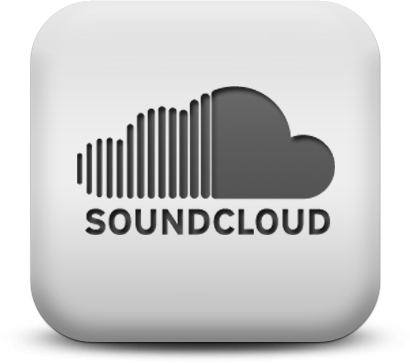|
 "Brown Sound" Amplifier
tips & setup
"Brown Sound" Amplifier
tips & setup
I use a mixture of amps at JFRocks.com for the Van Halen-style guitar
lesson tracks. I use a classic Marshall JCM 800 for many
tracks, but on most tracks I use the
now very famous for its Brown Sound online, Crate GFX 212.
Now before you start laughing at the thought of that, let me state for the
record that NOBODY and I mean NOBODY is more surprised than I am at the
Brown-Sound this Crate amp kicks out. I mean seriously, when I was a
kid Crate amps were the amp you got when your parents screwed-up and
bought you the wrong amp. But mark my words, this amp cranks out an
easy to dial in serious Brown-Sound. (as heard in many of the
example tracks on this page). Let me also say that it's been
said that I'm partly responsible for inflated prices on these now out of
production amps. And for that I'm both humbled and apologetic
The whole point is it's an inexpensive amp with a mind-blowing sound,
so I hope people won't over-charge.
I only originally bought mine because I was in a pinch for a gig and
needed to pick up an amp quickly and cheaply. Needless to say I kept it because
of its surprisingly awesome tone, and for more things than just VH by the way.
But we'll stay on topic, this is a Brown Sound page not Crate 101.
As for usage and settings, please keep in mind for example that the Crate GFX
is a solid state amp which makes it better for the lower volumes used in
recording, but not as great live as once you crank it much past 3 or 4 it
loses a bit of its warmth. Where as a tube amp like the Marshall
JCM 800 performs typically much better when cranked to 10. Yes
there are things you can buy to lower the voltage and thus make the
Marshall and other tube amps perform better at lower volumes, but they
will still have the Tube amp problem of getting tired and hot after long
hours of recording. Where as something like the Crate is a god-send
as you can record for 40 hours straight if you want to and it'll still
have the same sound it had when you started, and on top of that, it'll
still be cool enough to store your drink on.
Regardless of what type of amp you use, or the brand etc.
the basic EQ settings given below should help to at least give you a good EQ foundation for your Van Halen Brown Sound. Note that for
the later Sammy era sound with Chorusing it's a good idea to raise
up the mids a little bit beyond what's laid out below which is more for
the DLR era early VH tone and designed to be paired with the MXR Phase 90
and/or MXR Flanger.
Bass EQ:
2
to 4 out of 10 ;
Treble EQ:
9 or 10 out of 10 ;
Mid EQ:
2.5 to 6 (depends on amp & guitar. 4
is a good start) ;
Presence: 4 to 6 out of
10 ;
Reverb:
Varies from 6 to 10 on most amps, the solos usually have more than rhythms.
IMPORTANT NOTE ABOUT AMPS: I DO NOT like using
amps that haven't got a good built in reverb. I don't like using
separate reverb pedals or processors if I don't have to. Those units
work best when enhancing an amp's already decent reverb. Both my JCM
and CRATE (especially) have excellent built in reverbs. If you already have an amp and it has no reverb, you'll need
to alter the settings given above quite a lot to compensate for what the
reverb processor or pedal unit you're using is doing to alter the signal.
Try also not to clutter things up too much with 10-band EQ's and stuff
like that for the Brown Sound. This is actually a very simple guitar
sound that's quite ironically often over-thought by people, and
over-processed by even more people. Too many EQ options does nothing
but convolute the whole dialing in process. It's very pure, and what
I call a down and dirty sound. Early Brown Sound aside even if you
want the later Sammy era guitar tones there's really no need to go all
Mr. Spock on it and dig out some 10 or 20-band EQ. If you insist on
going that route, (maybe you're the type who just needs knobs to turn and
levers to move), then I strongly suggest you hit Costco for the 2500 count
family sized bottle of Advil. You're going to need it for sure.
 "Brown
Sound" Guitar
setup
- (The most
important aspect) "Brown
Sound" Guitar
setup
- (The most
important aspect)
So many people
overlook the guitar thinking this guitar sound is all about the amp.
Whether you want to believe me or not, the guitar is the most important
aspect of this sound. The wood its made out of, the strings you use,
the pick-ups you have in it. All very important. Even though
most of you are using solid body guitars, they still have a tone to them.
Each guitar sounds a certain way based on how it was made and how it's set
up. That said get to know your guitar. Play it unplugged for a
while. Listen to it. Is it warm like a Les Paul sounds
unplugged??, or is a little punchier like a Strat typically sounds
unplugged?? (depending on Strat wood type i.e. Ash, Alder etc.).
The characteristics of your guitar will enable you to figure out not only
amp adjustments, but also effect setting adjustments as well.
It might surprise many of you to know that
I actually record a-lot of the tracks (about 66%) that you hear in
my Van Halen-style set on SoundCloud with my Les Paul Studio.
No whammy bar on it, yet due to under-bend and slide-in techniques people
comment about "the great whammy bar usage" all the time, which
always cracks me up on some level. Songs like "Full
Shitter", and "Big
Brown" were all recorded in full on my Gibson Les Paul
for example and not the infamous White Kramer that's used as the main
example guitar on this page. My point is don't build some Millennium
Falcon Franken guitar if you don't want one. It's not necessary.
The White Kramer fell into my lap, I just finished building it so it could
be used, otherwise honestly it wouldn't exist, and I would get by just
fine with my modified Strats, and a Les Paul or two.
I only mention this as a factoid because the two guitars (Les Paul &
White Kramer) actually sound
very similar unplugged, and are set up with the same kind of guitar
strings. Both guitars have a warm Brown Sound without even plugging
them into anything. So based on experience gained from decades of
tinkering with equipment, I know what settings will work for each
guitar and what if any minor adjustments need to be made. Such as
for the Les Paul, there needs to be less REGEN on the Flanger (if used),
and a pinch more Presence is needed on the amp (if using the Marshall).
You need to figure this kind of stuff out for your specific guitar.
So please unplug the darn thing and listen to it. It'll help you
figure out any sound setting you want because you'll know what you're
walking in with as a base-line, i.e. warm guitar, punchy guitar, a guitar
that hates low end, a guitar that needs more mids to cut through. etc.
etc. etc.... All of what was just explained is why nobody can give
you a magic setting for the Brown sound, even for a Flanger pedal.
As I said, with the Les Paul even the Flanger setting changes slightly.
That said, as you move forward, keep in mind everything on this page is a
guideline that's here to help you dial in "your own" Van Halen Brown
sound.
Below are some guitar set up specifics to
help you dial in that EVH Brown Sound you're looking for. All that matters in this world, be it guitar sounds,
cars, dogs, spouses, etc. is "what works for YOU". Take suggestions
from other people, but ultimately success comes from finding what works
for you in your given situation. Even if you had Eddie's exact
setup, guitar, amp, effects, and settings teleported to your home from
1978, I promise you if you plugged into it, you would not have a good
Brown Sound right off the cuff. It would sound nothing like your Van
Halen albums. Some tweaks would need to be made. Especially
for example if you live in a humid state like Florida. Ed's stuff
would be coming from Los Angeles. It's not as humid here, so we use
different settings. Our air isn't as heavy because of that lower
humidity, and we're at a much higher elevation than Florida would be too,
making it even thinner still.
This is just one example, but others are room size, room shape, and room
acoustics etc.
-
Hum-bucker pickups
I use Duncan JB at the
bridge and Duncan Jazz at the Neck. I've been using them since the
80's and I believe that if it ain't
broke don't fix it. Really the Duncan JB rules for the Brown Sound
in my book. Plus, you can do a lot of other stuff with it.
It can go from Brown Halen to Metallica and over to warm Jazz and do it
all well. As a session guitarist all around things are great for
me. But honestly I'm not being lazy, I kid you not, the JB is
nothing short of awesome for all ranges of the VH guitar sound, from
early Brown to later era more chorused tones. I've tried other
pickups on the market, including some touted as being designed for the
VH Brown sound. However, they just didn't impress me, nor where
many of the others I've tried anywhere near as versatile in tone as the
JB is. Like I've said, this page is all about me telling you what
I use. People dig my VH'ey tones and write in and ask. As
always all of this is subjective, so as always try things for yourself
and draw your own conclusions. Strings, pickups, and guitars are
all things guitarists are fickle about by nature, and we as players tend
to be very loyal to a brand once we've found something that works "for
us".
-
Pure
Nickel Strings (Don't
cheap out!!)
The strings you
choose to use are so freakin' important. It never ceases to amaze
me the strings people slap on their guitars just to save a buck, or
because they like the pretty colors the packaging has. It's a bit
like putting econo-gas in a Ferrari and expecting to the get the full
performance of the car. I use Fender 150XL (now sadly
out of production) .009 1st
string .040 6th string. There are two sizes of 6th string,
normally I stay
away from the traditional .042 size typically found in .009 string sets for Van Halen applications,
but with the 150xl's out of production the .042 will suffice if need be
with maybe a slight adjustment to the bass EQ to limit boominess.
As for BRAND. Whatever brand you want to use is fine. If you don't like Fender
strings then buy another brand. Brands are really about player
preference, but as far as the strings themselves go and the Van Halen Brown Sound, I
highly suggest that you use PURE NICKEL, NOT NICKEL PLATED, and
try to find a set with a .040 sixth string, many brands make what they
call custom sets. You can also buy individual strings and build
your own sets. The ideal set is .040, .032, .024, .015, .011,
.009. In my opinion of course. But I base all of my opinions
on this page on decades of experience both live and in the studio.
-
Floyd
Rose (To float or not
to float?)
Or some sort of double locking whammy
bar system. I prefer Floyds, and I prefer them to float, however
it's not necessary for Van Halen.
In fact on his old Red and White Franken-strat the bridge actually
doesn't float. Note that I said, "I" prefer a floating bridge.
Never a bad idea to throw
some Vai tricks in with your Van Halen.
-
Remove
the Tone Knob (Fact or
Fiction?)
Just a tip but I've found I
get a fatter sound when I take away the load caused by the tone knob.
If you disagree or are not
electronically inclined please DO NOT DO THIS!! It's not a big
deal or requirement of any kind.
-
Pickups screwed into body
(Please don't misquote me)
Now this is a myth that
some claim I said many years ago when we did online guitar lessons that screwing the pickups directly into the body of the
guitar must be done for a good Brown sound. I was reading
someone's forum or blog I got a Google alert about some years ago, and
someone decided to misquote me, either because they didn't
understand what I said, or they can't read. In either case, here's the
deal. The reality
is I do screw the pickups directly into the wood of the infamous
JFRocks.com White Custom Kramer. I DO NOT do this because Eddie
did it, or because I think it fattens the sound. I do it because
it's cool of course!! Ok, and because I don't have the mounting plates for my White Kramer
and never have, and I'm way too lazy and cheap to buy them.
When I first got the guitar it was just a body
and neck
with no hardware, the routed out pickup slots in the body were fairly
shallow so it was just an easy process to grab a couple screws and drill
them into the body. I suppose I could buy the mounting plates if I wanted to, but again
like I said about the pickups, if
it ain't broke why fix it, plus I think the routing for the pickups
is too shallow and was only begun, which means I would have to route the
slots out deeper, and I'm a car guy, I'm not much for woodworking, nor
am I very good at it. The fact is screwing the pickups
directly into the wood of your guitar body adds very little to the sound and isn't necessary, however it does
tend to increase sustain a bit since the wood vibrations run through the
pickup (at least in theory anyway, but Mythbusters never did a show
on it, so we may never know..). But as for fattening the sound, NO, not that I can tell.
My Les Paul's pickups are on mounts and it's a big FAT Brown sound
monster.
Frankly I think the thicker than thick layer of Chevy Chevette car paint
from the 80's, and auto primer under layer that the White Kramer is painted with does more to
fatten the sound than me having the pickups screwed into the body.
That thick paint and primer seems to add a lot of warmth. And this I know for a fact
because I've played it with no paint, and a thin layer of paint, and in
both of those instances it was nowhere near as warm and brown as it is with its
current car paint and primer paint-job.
Guitar Detail
of the JFRocks White Kramer I use for VH-style materials
Basic Bare-Bones "Brown Sound" Effects
- (Just what's
necessary for a great Brown Sound)
First off let's begin this section with a little MXR
Phase 90 101 for those wondering what to buy. In my opinion the best MXR Phase 90 to
use for the VH Brown sound is the "Script Logo" model from the
70's.
The Script model as it's known will give you the best VH sweep. The
re-issue model sweeps a little too high for a true
VH Brown
Sound tone. If you can't track one of these classics down
on EBay or where ever, I suggest going with the
EVH model and selecting
the script mode using the button at the top of the pedal.
That said, the photo I have of the Phase 90 on this page
is of the re-issue
model as I cannot show any VH stripes without permission because they're
trademarked. The "Script" model will have the MXR logo
and phase 90 written in
script handwriting text, and it's usually a more
burnt Orange color than the re-issue.
Script model photo

5 Classic
Phase 90 VH "Brown Sound" examples
|
|
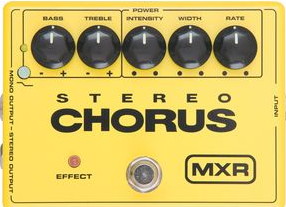
MXR
Stereo Chorus:
Though not really a Van Halen
effect as far as one that everyone who's into Van Halen has, I've found
through my own tinkering that the MXR Stereo Chorus is phenomenal for
dialing in an amazing mid and late era VH tone. It's a great substitute for the
expensive harmonizer as well. This is the ideal Chorus effect for the Van Hagar
era sound and it doesn't break the bank. Like the Phase 90 I also recommend running the stereo Chorus in the
FX Loop of your amp.
But again to each his own, what works for me and my specific guitar and
amp setup may not be ideal
for your setup, so try both ways and figure
out what works best for you.
Either way the settings below
are a great guideline Chorus setting for the Van Halen tone, provided your amp EQ
is set properly and your guitar is setup properly. (see earlier
sections of this page for tips)
Standard setting
(basic rule of
thumb guideline only!! You'll need to tweak based on your setup):
Bass = 40%
Treble = 60%
Intensity = 25%
to 80% - depends, for sounds like on OU812, a
60%-80% setting is suggested.
Width = 25%
to 60% - I keep the Width setting the same or
close to the Intensity setting, but no higher than 60%
Rate = 10% to 25% max.
5 Classic
VH "Brown Sound" examples using the MXR Stereo Chorus
*All tracks on this page
are done by me strictly for fun, no licensing is available.
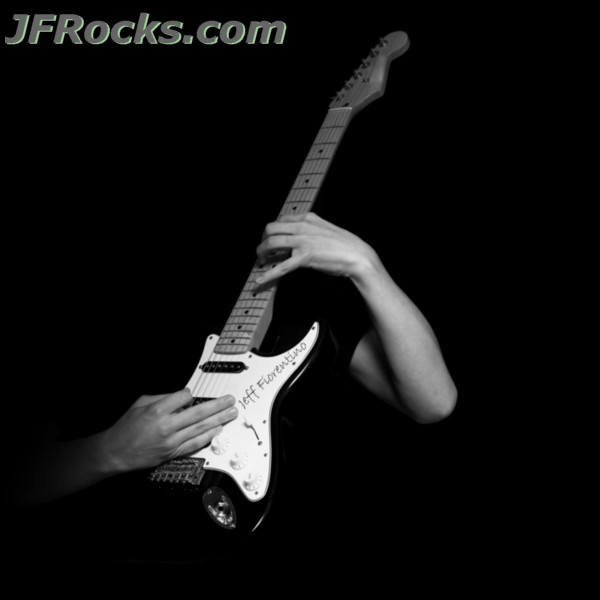 VH Chorused Tone Example #1 VH Chorused Tone Example #1
Chorused rhythms, with flanged leads |
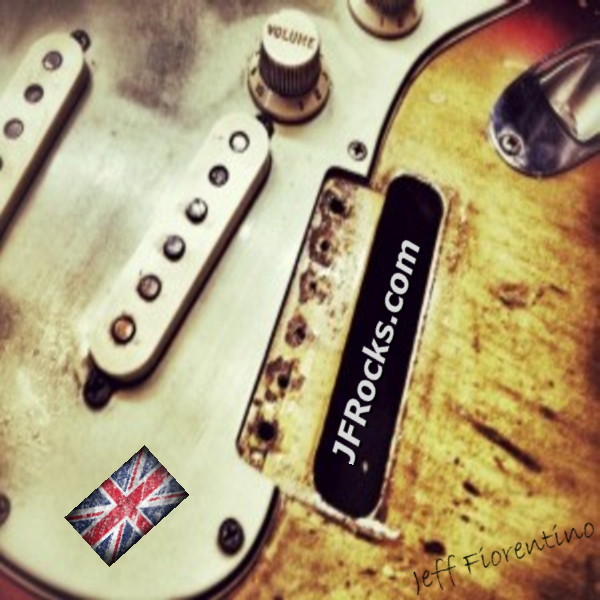 VH Chorused Tone Example #2
VH Chorused Tone Example #2
Uses
a lower intensity setting
|
| |
|
|
"Full
Shitter"
- written by
Jeff Fiorentino |
"Dodgy
Bog"
- written by
Jeff Fiorentino |
|
|
| |
|
| |
|
| |
|
 VH Chorused Tone Example #3
VH Chorused Tone Example #3
OU812 style chorused tones |
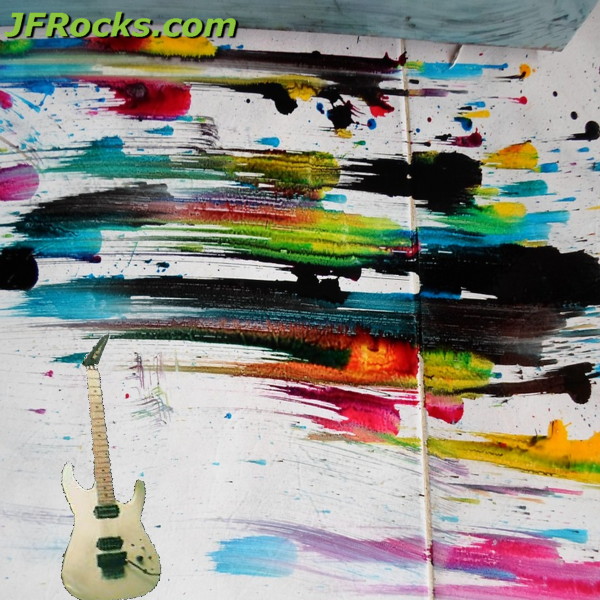 VH Chorused Tone Example #4
VH Chorused Tone Example #4
Extra wide (added width) chorused tones
|
| |
|
|
"Mood
Swing"
- written by
Jeff Fiorentino |
"Birthday
Sex"
- written by
Jeff Fiorentino |
|
|
| |
|
(Featured) - VH
Chorused
Tone Example #5
This
track utilizes a mix of chorused and flanged tones. With
chorus set to the baseline settings given above
for the main rhythms, and
a flanger/chorus mix for the out rhythms and all leads including the
solo. |
|
|
_________________________________________________________________
In
Closing
Obviously for the Van Halen "Brown Sound" there are other effects that can be added
that Eddie used, such
as some light overdrive if your amp's isn't great, or some compression,
harmonizer, or
even delay of course. But I'm keeping it simple here on this
page that I'm looking at as a "Brown Sound" layout page. What's been
covered above is
really the bare-bones easy to configure recipe for a GREAT VH "Brown Sound", from
early brown, to Hagar red. What I've explained here is how I and
we at JFRocks.com got the sound on the VH style music tracks we
produced for lesson content back in "the day", and these days how we get
the sound for films and television when the VH type tone is called for
and/or requested in some cases. There's no Van Halen-style "Brown Sound" in the
tracks featured anywhere on this page that wasn't
obtained using the exact equipment and basic settings I've given and
explained. Some tweaking will be necessary on your part of course,
since as was explained equipment varies, and you don't have my exact
setup. So even if I came to your house to dial in the sound, I would
need to find it on your setup. However using the tips I've given on
this page a "guideline", you should be able to find the "Brown Sound"
in there somewhere with a few minor adjustments on your part.
Hopefully these tips have been of some help.
--- Jeff Fiorentino
____________________________________________________________________________________________
Crank
up Jeff's full Van Halen-style music set from
SoundCloud
|
